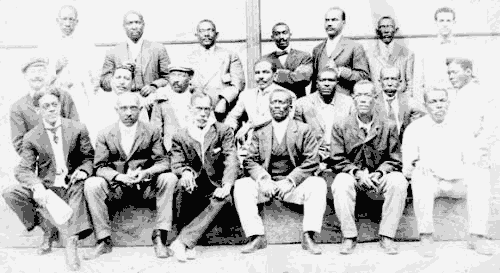 Members of the Movement
Members of the Movement
Their goal was to advocate for Afro-Cuban integration into mainstream society with equal participation in government. Their platform demanded an end to racial discrimination, equal access to education and government jobs by Afro-Cubans and an end to the ban on "non-white" immigration. Additional demands tried to improve the conditions of all Cubans: the expansion of compulsory free education from 8 to 14 years, abolition of the death penalty, establishment of an 8-hr work day and priority for Cubans in employment.
"Our motto is 'Cuba for the Cubans,'" said an editorial in Prevision on September 15 1908.
In May 1909, while serving as President of the Cuban Senate, Morua Delgado introduced a law in the senate that banned political parties based on race or class. This was a direct attack on the Partido Independiente de Color, and was known as the Morua Law.
Three years later a demonstration sponsored by the Independientes grew into demonstrations in which Afro-Cubans attacked and burned foreign-owned properties. In May of 1912, PIC organizers launched an armed demonstration seeking legalization in time for November's elections. Government forces, fearing an all-out "race war" and hoping to rid it of a prominent political adversary, subsequently launched an armed campaign against the party, massacring an estimated 6,000 Afro-Cubans. Among the dead included party leaders, rank-and-file members, and ordinary Afro-Cuban peasants who had no ties to the PIC. During the uprising, US Marines land and two US battleships anchor in Havana harbor but the Taft administration maintains this does not constitute intervention.
The assault resulted in the final demise of the party and a warning to black Cubans who sought to challenge the structure of power established and maintained by white Cuba. "The movement was crushed immediately everywhere except in Oriente, especially Guantanamo region," wrote Hugh Thomas in Cuba, or The Pursuit of Freedom. "The alarm was nevertheless immense, Havana being overwhelmed by panic. Everyone had feared a 'Negro uprising' for years. The atmosphere resembled the 'Great Fear' in the French Revolution."